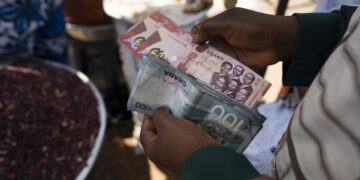Commerce and Finance Sector Leads in Secured Loans, Capturing 36.3% Share in Q2 2024
The Bank of Ghana’s Q2 2024 Collateral Registry Brief reveals that the Commerce and Finance sector emerged as the leading recipient of secured loans, capturing 36.3% of the total value.
This was followed by the Services sector at 16.6% and the Construction sector, which accounted for 9.8%.
The Manufacturing sector received 4.4% of secured loans, while the Mining and Quarrying sector garnered 2.2%.
The Agriculture, Forestry, and Fishing sectors received just 1.1%, with smaller sectors like Transport and Haulage at 0.7% and Electricity, Gas, and Water at a mere 0.1%.
Total secured loans granted by banks and Specialized Deposit-Taking Institutions (SDIs) soared to GH¢10.8 billion in Q2 2024, marking an impressive 83.1% increase from GH¢5.9 billion in the same period of 2023.
This growth underscores the rising demand for credit within Ghana’s financial sector, primarily driven by banks.
Banks were the predominant force in the secured lending landscape, disbursing GH¢9.1 billion—an 85.7% increase from GH¢4.9 billion in Q2 2023.
This substantial growth underscores the essential role banks play in the economy by extending credit to both corporate and retail clients. The Collateral Registry confirms that banks remain the primary drivers of credit expansion in Ghana.
Specialized Deposit-Taking Institutions also showed robust performance, with total secured loans reaching GH¢1.7 billion in Q2 2024—up 75.1% from GH¢971.1 million a year earlier. While this growth is notable, it was slightly eclipsed by the expansion observed in the banking sector.
In terms of market share, banks retained the largest portion of secured loans at 83.8% in Q2 2024, a slight increase from 83.7% in the previous year.
The market share of Savings and Loans Companies decreased marginally to 9.5%, down from 9.8% in Q2 2023, reflecting a more competitive landscape.
Conversely, Rural and Community Banks increased their market share from 5.2% to 4.4%, indicating their growing influence in the secured lending market.
Meanwhile, Microfinance Institutions saw a slight decline in their share, slipping to 1.0% from 1.1%.








